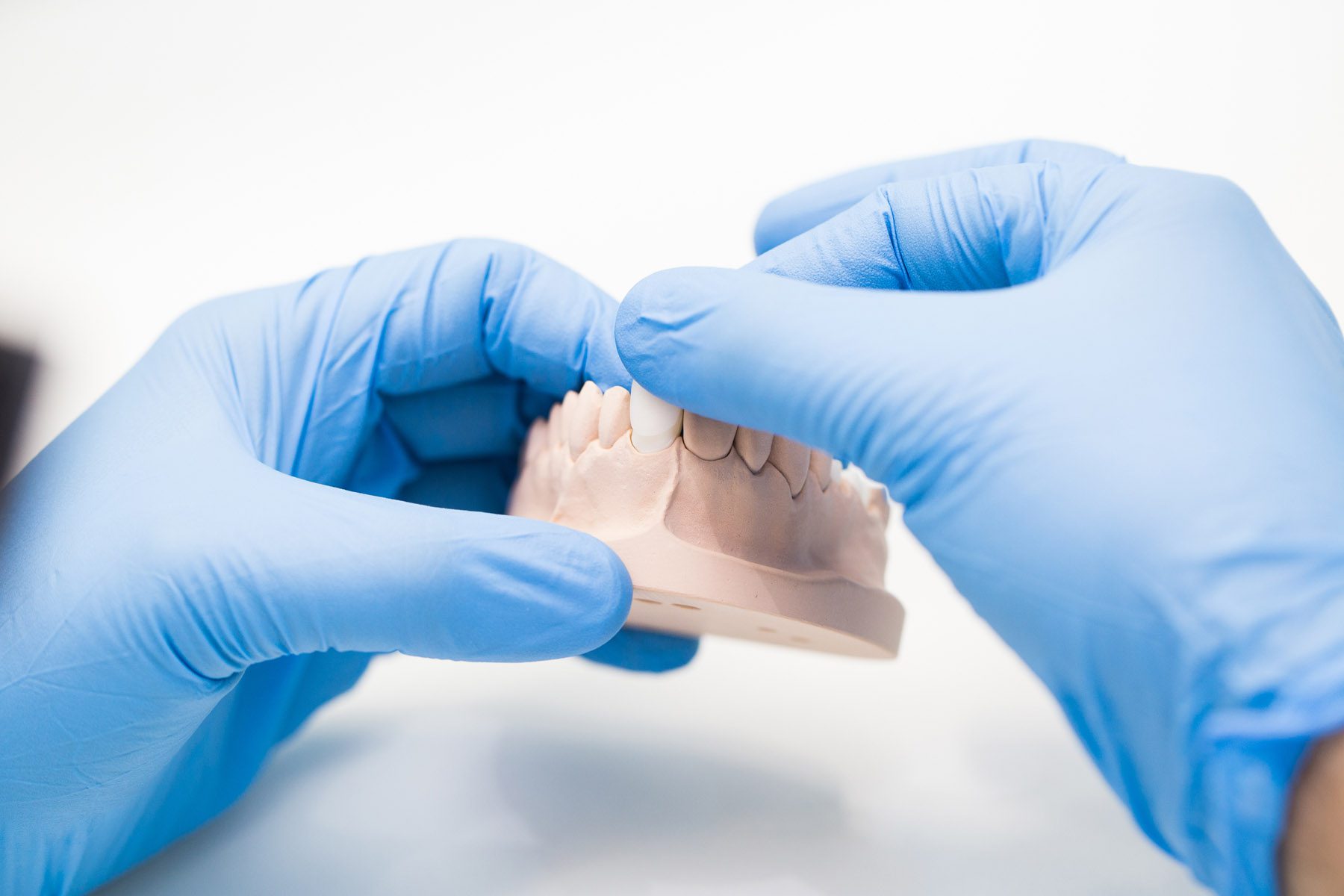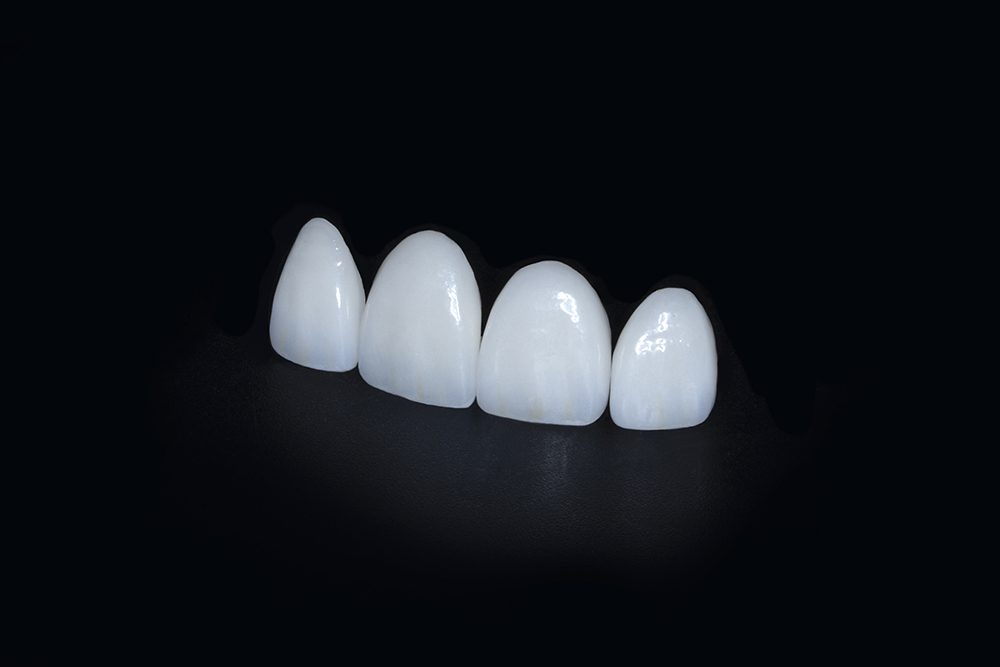

Hand pressed from lithium disilicate ingots from your choice of investment materials. IPS PressVEST® and IPS PressVEST Speed® – IPS e.max® Press provides 400 MPa strengths with translucency that made it the go-to esthetic restoration for many doctors for more than a decade.
Hand pressed from lithium disilicate ingots from your choice of investment materials – IPS PressVEST® and IPS PressVEST Speed® – IPS e.max® Press provides 400 MPa strengths with translucency that made it the go-to esthetic restoration for many doctors for more than a decade. Available in all 16 A-D Vita® shades and four Bleach BL shades, IPS e.max® press is suitable for nearly every indication. Because Keating Dental Lab offers staining, cut-back or layering, you’ll receive the finish of your choice.












Get Your Free Keating Doctor Kit
Experience the ‘Keating Difference’

The innovative Multi ingots are available in selected Bleach BL and A–D shades. The material demonstrates a lifelike shade progression from the dentin to the incisal areas and therefore imparts monolithic restorations with a highly esthetic appearance. With these ingots, veneers and anterior, posterior and hybrid abutment crowns are fabricated quickly and efficiently. Ideally, these restorations only need to be glazed. If desired, however, they can be modified using the staining or cut-back technique.
The high translucency ingots (HT) are suitable for the fabrication of minimally invasive full-contour restorations, such as inlays, onlays, and veneers. The restorations are characterized by staining materials.
The MT ingots are provided in the following shades: A1, A2, A3, B1, BL2, BL3, and BL4. These medium-translucency ingots are used in cases where a brighter material than HT and a more translucent material than LT is needed. Restorations made of the MT ingots are ideal for the staining and cut-back techniques.
Full-contour partial crowns and crowns are fabricated with the low translucency ingots (LT). In the anterior region, in particular, the esthetic appearance of the restorations is maximized by employing the cut-back technique.
The medium opacity ingots (MO) are used to fabricate substructures for vital or slightly discolored teeth. They create an ideal basis for lifelike restorations completed with the layering technique.
In cases where the prepared tooth structure is discolored or titanium abutments are used, the HO ingots mask the dark background to achieve highly esthetic results.
The Impulse™ ingots are available in two different levels of brightness (Opal 1, Opal 2). The restorations produced with these ingots have exceptionally opalescent properties. Therefore, this material is ideal for producing (thin) veneers for light teeth, which require an opalescent effect.
Our next category is lithium disilicate and there’s really only one on the market and that’s E-Max and I think most of you are probably familiar with E-Max, again lithium disilicate. Flexural strength of this material is approximately 400 megapascals. As you can see, this is about four times stronger than the porcelain on a PFM, yet only about a third of the strength of our KDZ Bruxer®. Now, our KDZ Bruxer® Aesthetic, as I mentioned, is about 650, so a little less in the strength of our KDZ Bruxer Aesthetic®, which is our anterior monolithic or aesthetics monolithic zirconia and a third of that of our monolithic KDZ Bruxer®.
Where I use E-Max is veneers, anterior crowns, and that includes pre-molars, I consider a pre-molar to be an anterior too, and posterior crowns with adequate occlusal clearance and I would say a minimum of 1 mm occlusal clearance. As I mentioned earlier with the KDZ Bruxer® or the KDZ Bruxer Aesthetic®, monolithic zirconia, we can go 0.5 mm. In some situations on second molars where the patient has a reduced inner arch distance, maybe a short clinical crown prep and we have minimal occlusal clearance, E-Max is contraindicated, in my opinion for that. That’s where a KDZ Bruxer® or a KDZ Bruxer Aesthetic® is ideal.
The other application for E-Max is anterior three-unit bridges. The pontic width, maximum, is 11 mm in the anterior, so that’s single pontic, and 9 mm in the posterior. That is a pre-molar. I have no problem going a bridge from 27 to 29 or 20 to 22 with E-Max, but as soon as we go and we replace a molar where the pontic width is greater than 9 mm, we’re going to switch to either PFM or a zirconium, either a substructure or monolithic.
Fill out the form to send us a quick message, and we’ll get back to you right away!
16881 Hale Ave
Irvine, CA 92606
Main Phone: 1-800-433-9833
Request New Doctor Kit
Phone: 1-800-433-9833
Email: [email protected]
Request Shipping Supplies
Phone: 1-800-433-9833
Email: [email protected]
Founded in 2002, Keating Dental Lab is a full-service dental laboratory serving dentists and patients throughout the United States. Think of Keating as your one-stop solution, offering everything from case planning and diagnostic waxing, to full arch implant hybrid restorations.
Thank You!
Your information has been received.
CHECK YOUR EMAIL FOR DETAILS ON HOW TO RECEIVE YOUR DISCOUNT.
Click here to learn more about Keating Dental Lab.

Thank You!
Your information has been received.
If you have a question, or would like to talk to us about a case, give us a call:
877-872-3510
Click here to learn more about Keating Dental Lab.

Thank You!
Your information has been received.
If you have a question, or would like to talk to us about a case, give us a call: 877-872-3510
Click here to learn more about Keating Dental Lab.

{field:firstname}
Get Your Free Keating Doctor Kit
Experience the ‘Keating Difference’
Join our mailing list and receive: Exclusive Offers, Technology Updates, Product Alerts
Get Your Free Keating Doctor Kit
Experience the ‘Keating Difference’